Tourism is shifting from mass travel to independent, selective experiences, with travelers seeking to bypass metropolitan areas. Hong Kong’s islands and UNESCO Global Geopark provide ideal opportunities for leisurely exploration, writes Li Bingcun in Hong Kong.
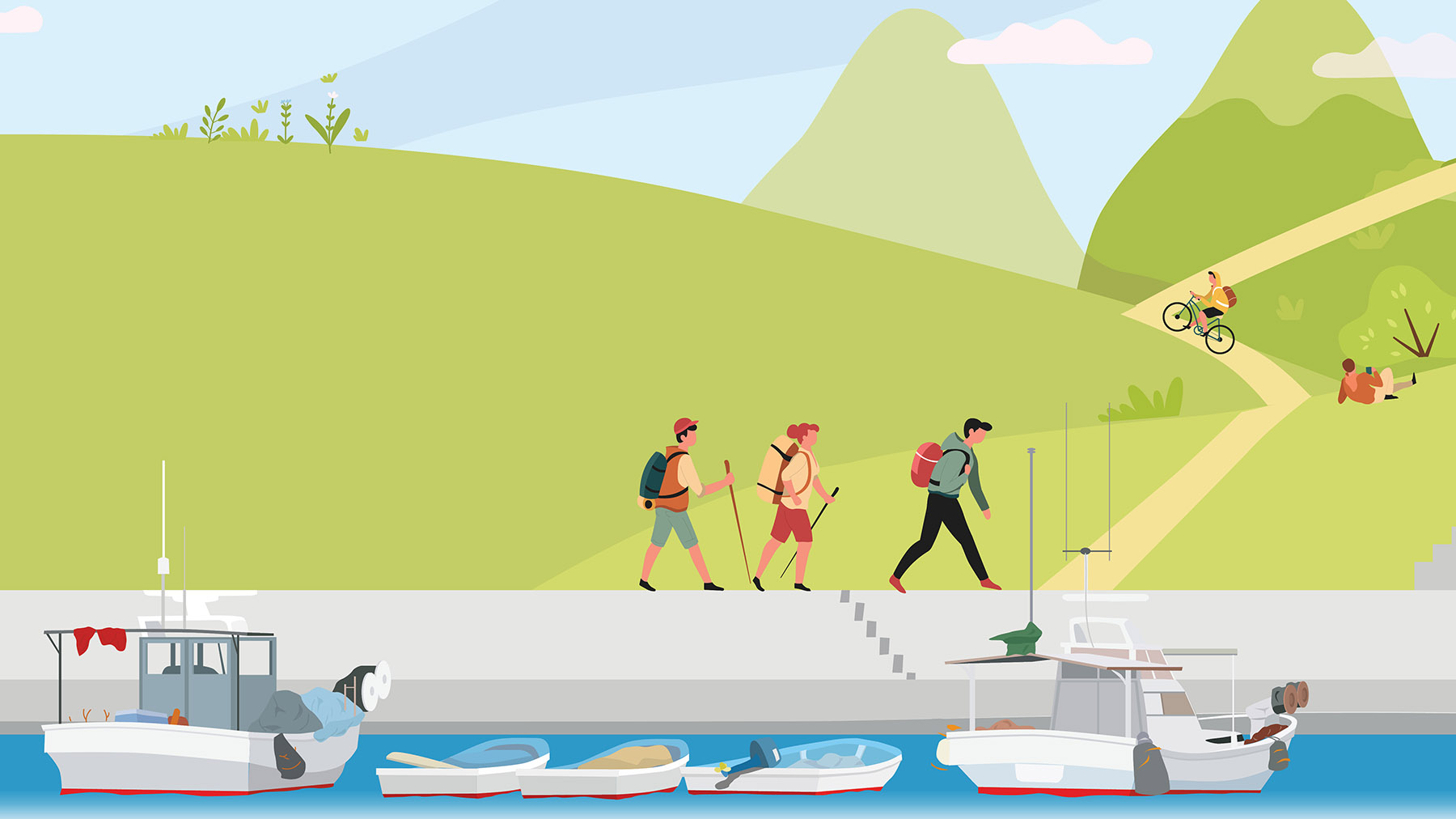
The Hong Kong Special Administrative Region government’s December tourism development blueprint proposed island travel to boost eco-tourism, and pledged tourism integration with culture, sports and food festivals, to accelerate the transformation.
The tourism authority outlined specific measures such as tailored travel itineraries, improved infrastructure, integrated resort projects, pier renovations, and support for yacht tours.
READ MORE: Hong Kong tourism strives to grow with new strategies
Hong Kong’s untapped tourism assets of 263 islands constitute 320 square kilometers, nearly one-third of the city’s area, boasting geological wonders, fishing villages, cultural heritage, and artisanal food. Among Hong Kong’s top 10 natural attractions, four are related to islands.
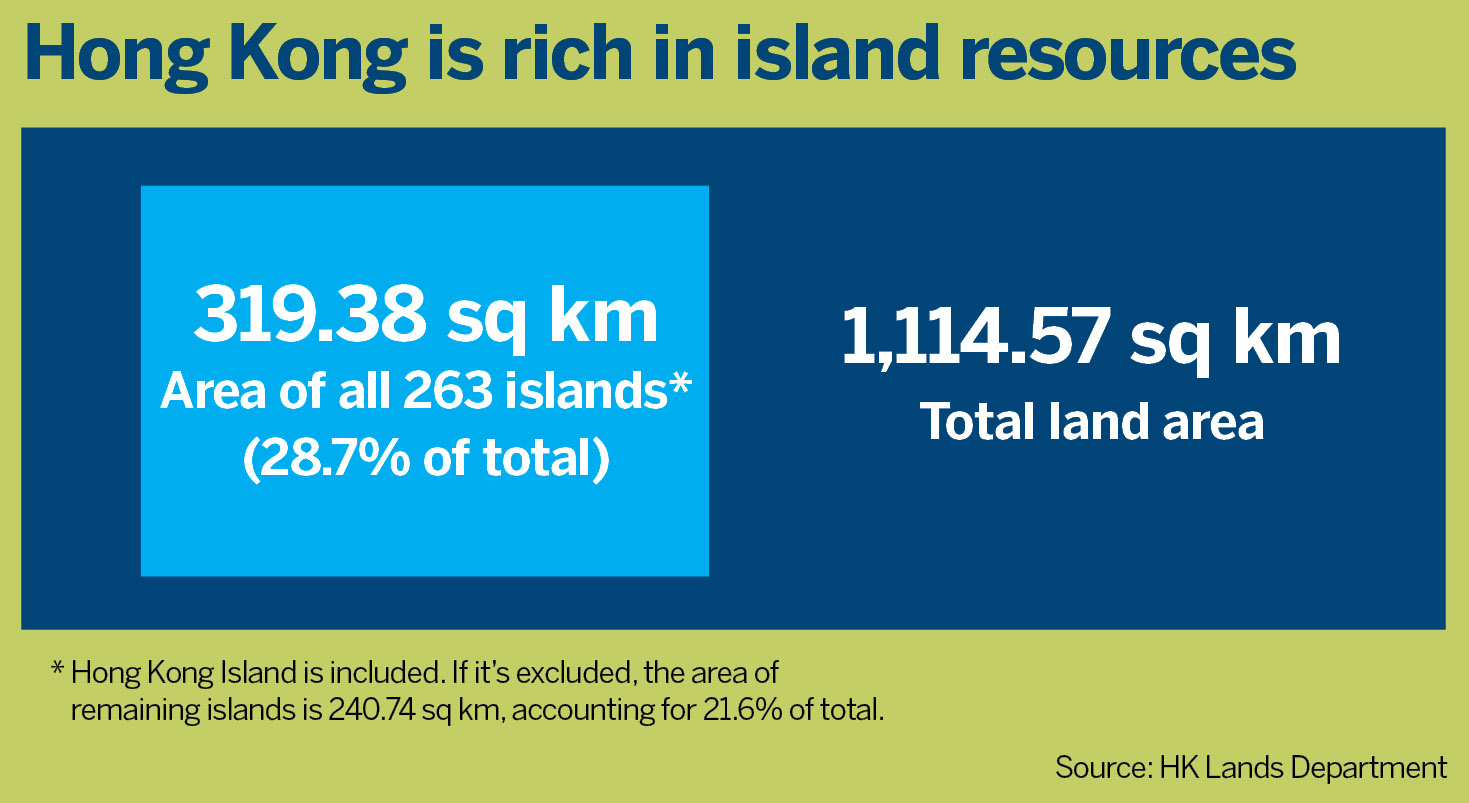
Don’t just transit
Hong Kong’s appeal as a flashy metropolis has faded for visitors from the Chinese mainland who are able to access cities such as London, Paris and New York. Hong Kong still enjoys the advantage of being an international air-travel hub. The challenge is to entice transiting travelers to stay and explore more. Skyscrapers and sleek department stores are no longer enough. Independent tourists seek to experience authentic character and living culture.
“The biggest attraction of Hong Kong’s islands is their proximity to the bustling downtown area, which provides a striking contrast and enriches travelers’ experience,” said Perry Yiu Pak-leung, Hong Kong lawmaker representing the tourism sector.
With convenient transportation and an abundance of cultural events like the floating colors parade and bun scrambling contest, Lantau, Lamma, and Cheung Chau islands are choices for residents and tourists, to escape the hustle and bustle of city noise, pollution, and traffic.
The 150-square-kilometer UNESCO Global Geopark in northeastern Hong Kong, is a natural draw for anyone interested in geology. It includes marvels like towering rock columns, and the stunning, barren “red island” of sedimentary rocks. Many residents have not visited this wonder.
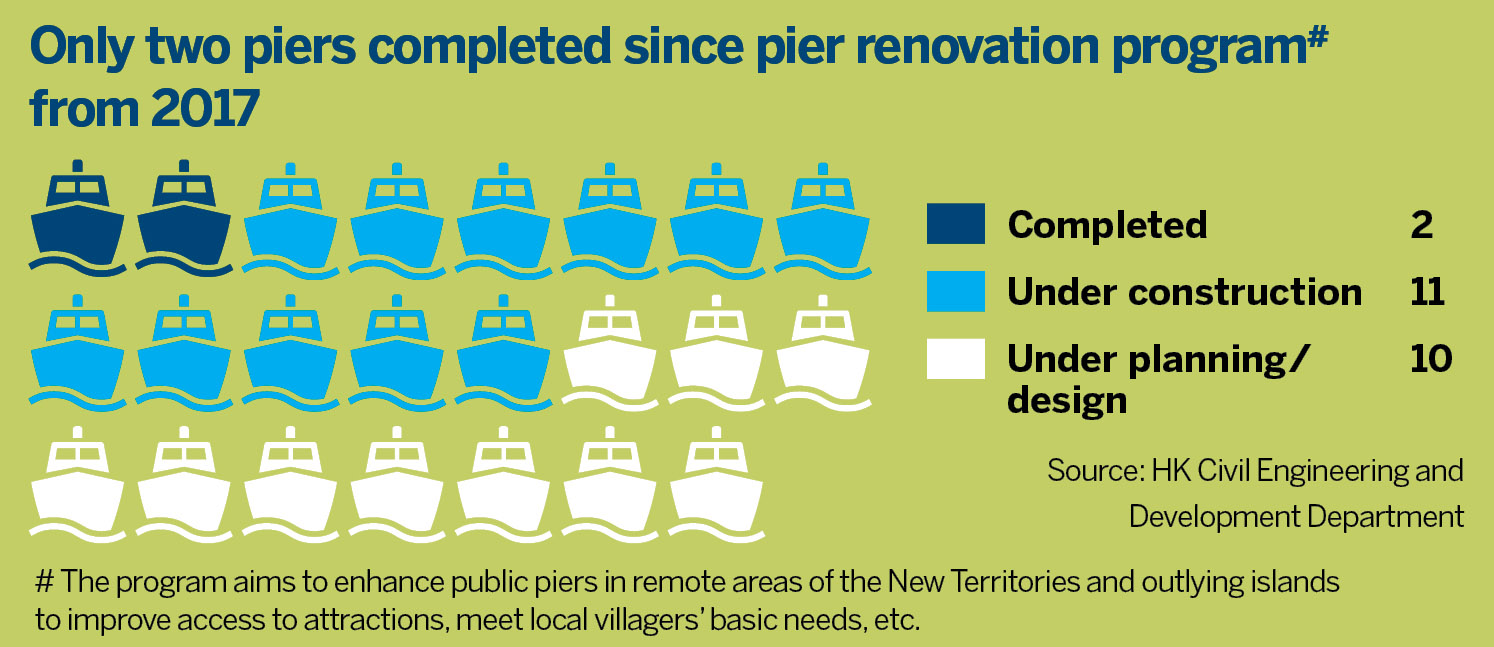
Post-pandemic rebound
Last year, most of the world’s travel destinations recorded arrival figures well above pre-COVID-19 pandemic levels, according to UN Tourism. Although Hong Kong’s visitor numbers steadily increased to 45 million in 2024, they fell short of the 56 million in 2019, let alone the peak of 65 million in 2018.
After the COVID-19 pandemic, the travel patterns of inbound tourists have seen fundamental changes, from shopping-oriented trips to experience tours for eco-sightseeing, cultural appreciation and leisure. Meanwhile, Hong Kong residents show a growing enthusiasm for nearby mainland cities where they get value-for-money and consistent service quality.
During the National Day Holiday in October — the traditional peak season for the local tourism industry — over 97 percent of the 1.2 million mainland tourists chose to embark on self-guided travel, rather than group tours. These were discerning travelers seeking to enjoy more meaningful travel experiences.
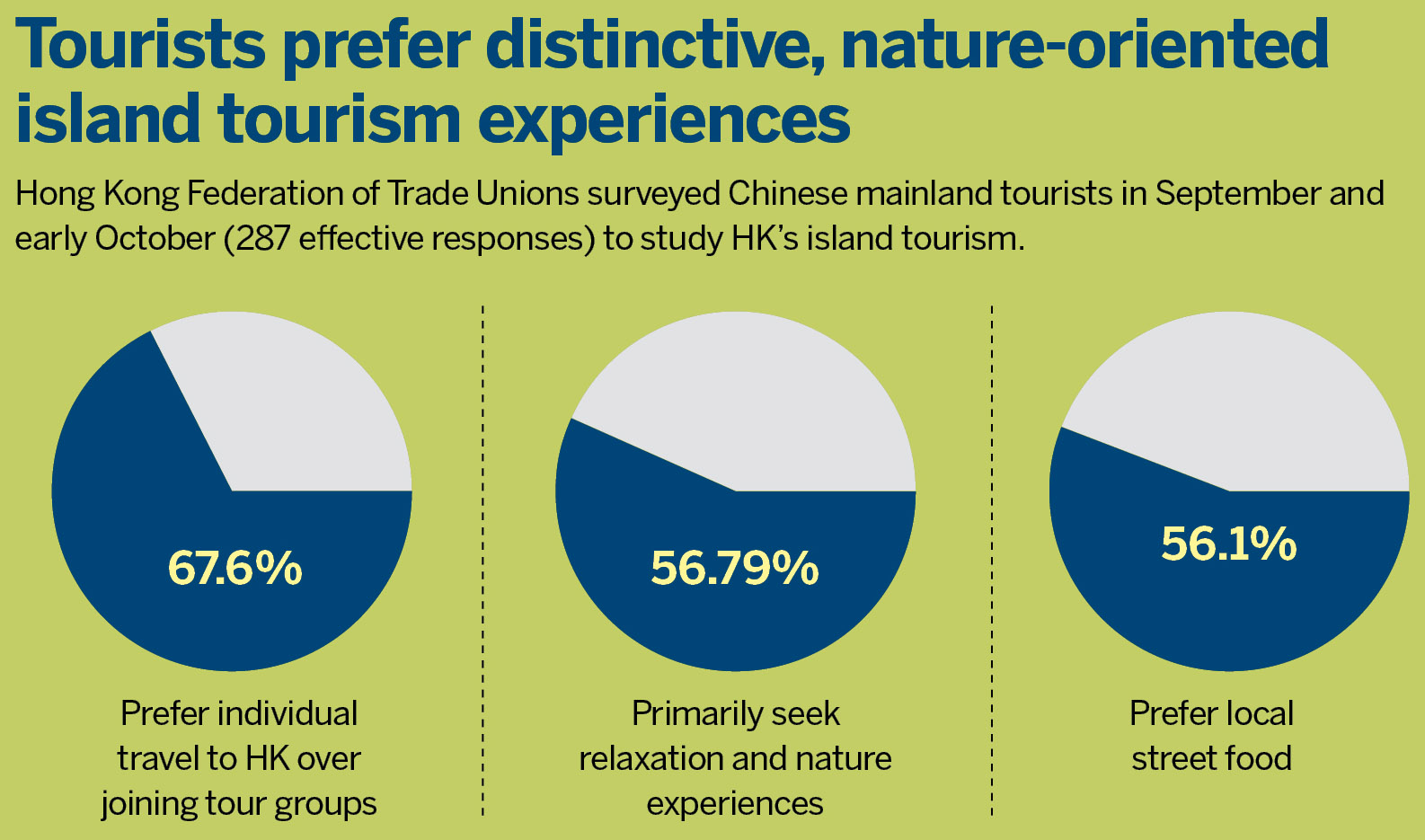
Speedboat tours
Splitdyboat, a tour platform specializing in speedboat services, has launched over 20 island-centric tour packages. Kate Lam Lok-yee and her partner founded the club before the pandemic, to promote Hong Kong’s natural beauty, which she believes compares well to overseas destinations.
Their flagship product — a guided tour of the Four Sea Arches Volcano at the geopark — attracted over 3,000 participants during the six-month sailing season last year. This year, they hope to attract over 10,000 customers for the trip.
There are also scattered hidden islets, some of which are uninhabited, that can only be explored by chartered boats. They are ideal for leisure walks amid grasslands, and for outdoor activities like camping, kayaking, snorkeling, and rock climbing.
Some islands have become cultural landmarks, featuring dotted art installations and renovated art spaces, along with history preservation efforts showcased in “story rooms”, offering various workshops.
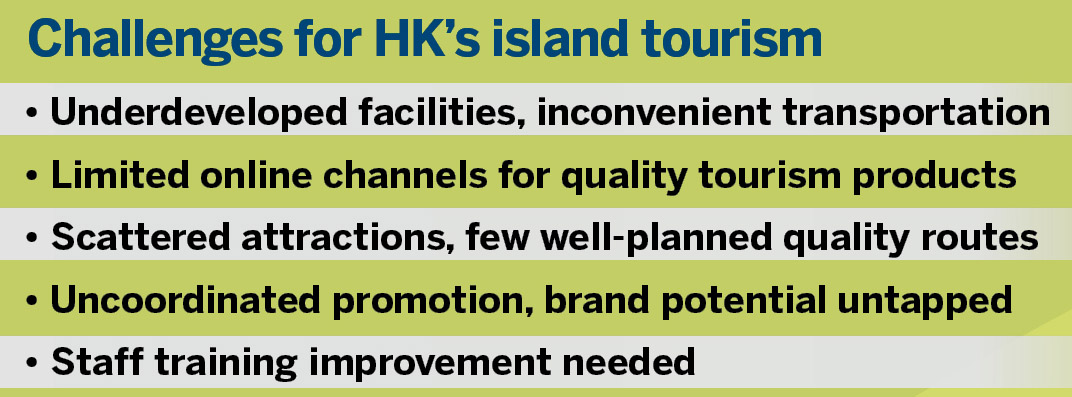
Maggie Lin, who grew up on an island in Guangdong province, and who now works in the city of Shenzhen, enjoys camping on the islands of Hong Kong for their pristine views and well-equipped amenities. “It’s a great way to relieve stress. Such a weekend tour to explore Hong Kong’s nature is popular among many outdoor lovers from Shenzhen.”
Gao Jun, associate professor of tourism management at Sun Yat-sen University in Guangzhou, who also serves as co-chair of the university’s UNESCO Chair on Sustainable Tourism in UNESCO-designated sites, said that Hong Kong’s island resources have long been overshadowed by its metropolitan image.
“Island tourism can enrich Hong Kong’s brand as a tourist attraction. Its compatibility with micro-vacation products can extend visitors’ stay and boost spending ... tourism opportunities related to the sea are a ‘blue ocean’ opportunity, offering numerous possibilities to explore,” said Gao.
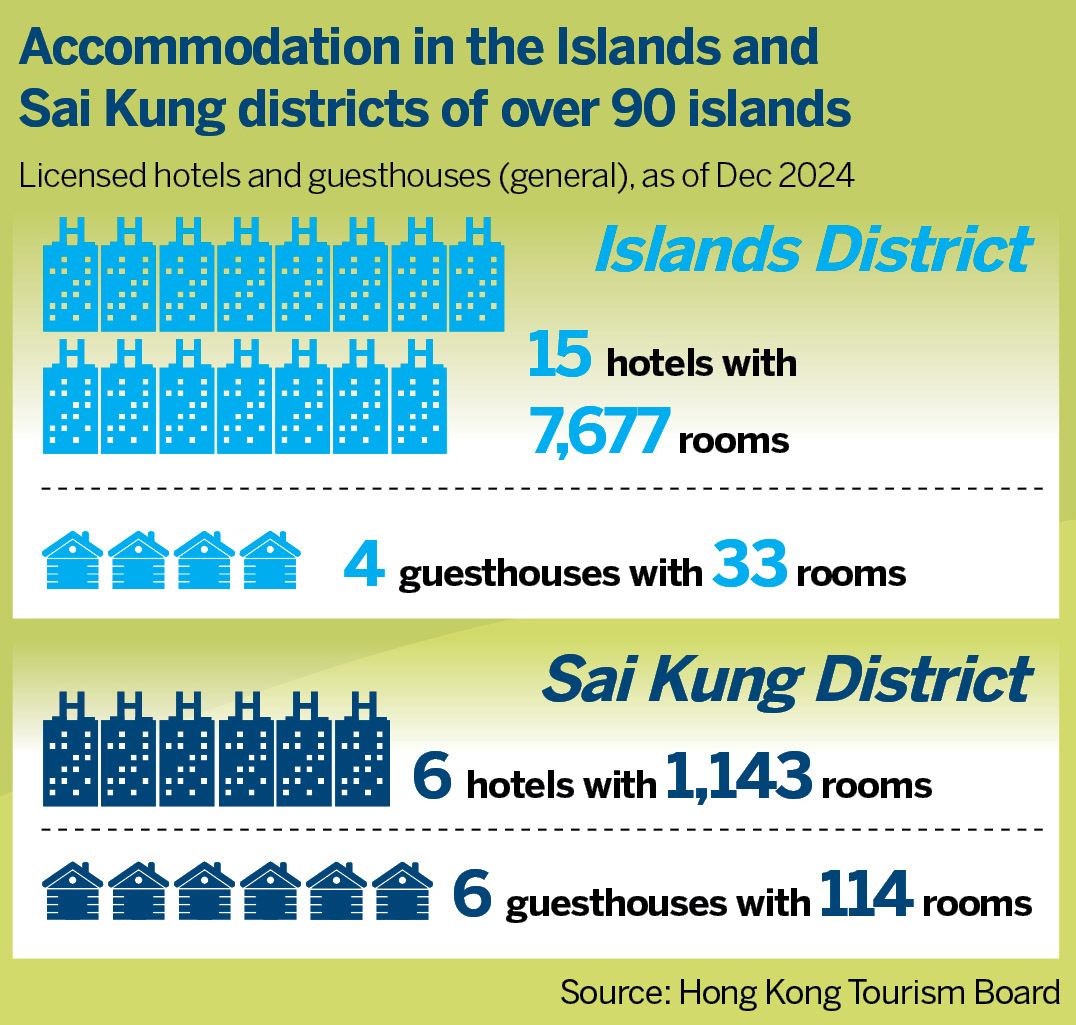
Yip Pui-kei, district councilor of Islands Constituency, says he believes islands are suitable for tourism development strategies in the short, medium, and long term. They can cater to tourists’ interests for in-depth travel for the time being, and propel the rebranding of overall Hong Kong tourism in the long run.
Chen Ruidong, general manager of China Travel Service (Hong Kong) Ltd (CTSHK), a major travel service provider in the SAR, said island tourism in many regions of China is still in the early stages, with a gap in product richness compared to world-class destinations.
As China’s tourism demand grows, both official and social investment interest in island development is increasing. CTSHK launched 15 one-day island travel packages targeting mainland tourists which received a positive market response. This year, CTSHK will expand to overseas markets to attract more foreign tourists.
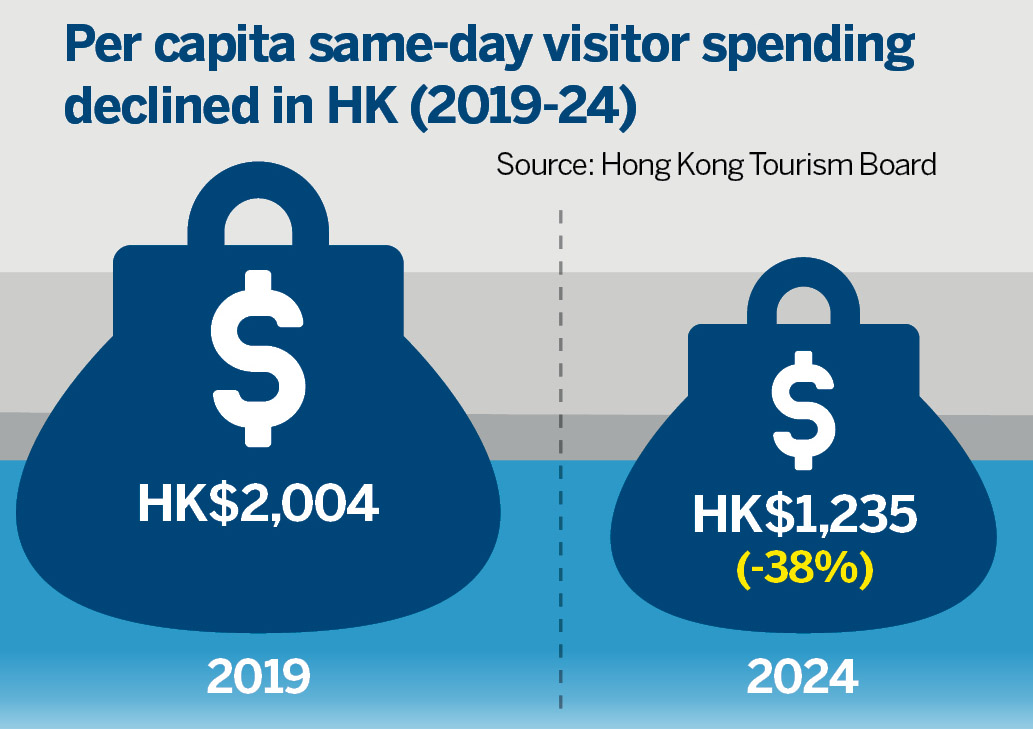
Regional island tourism
Chen observes that in addition to pure natural scenery, Hong Kong’s original fishing villages enhance the allure of its islands. This appeal attracts tourists from nearby markets, such as Southeast Asia. Additionally, there is potential to co-develop multi-stop travel products with other islands in the Guangdong-Hong Kong-Macao Greater Bay Area.
In October, Guangdong province launched an island-hopping travel route that connects Nan’ao Island, Hailing Island, and other attractive islands in the province, offering nature sightseeing, leisure activities and exploration of maritime culture.
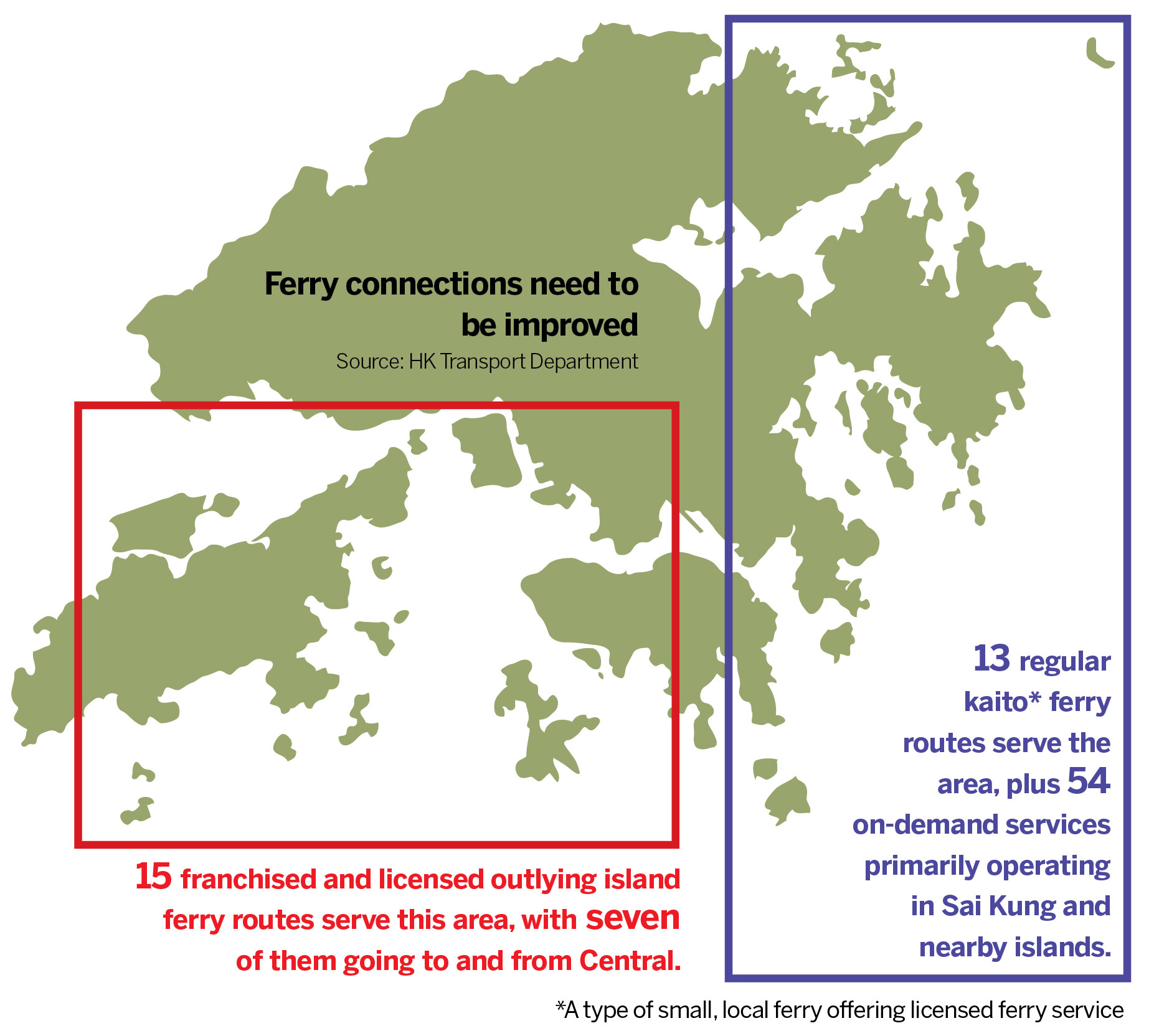
It also tapped into tourism potential of uninhabited islands like Changqin Island (previously known as Sanjiao Island) in Zhuhai, which was transformed from an ecologically-damaged site to a comprehensive travel destination with music culture as a hallmark. Opened to visitors in May 2023, the island is managed by a State-owned enterprise and is one of the first uninhabited islands to be developed for tourism in China.
Zhoushan archipelago of east China’s Zhejiang province has initiated a mega project to rejuvenate its coastline with cultural, tourism, technology, and environmental facilities. It is committed to attracting social capital to islands with high development potential, greatly boosting both tourism traffic and online presence.
The province of Hainan, the nation’s bellwether in island tourism, has creatively introduced drone and submarine sightseeing tours, allowing passengers to appreciate its stunning panoramas from new perspectives.
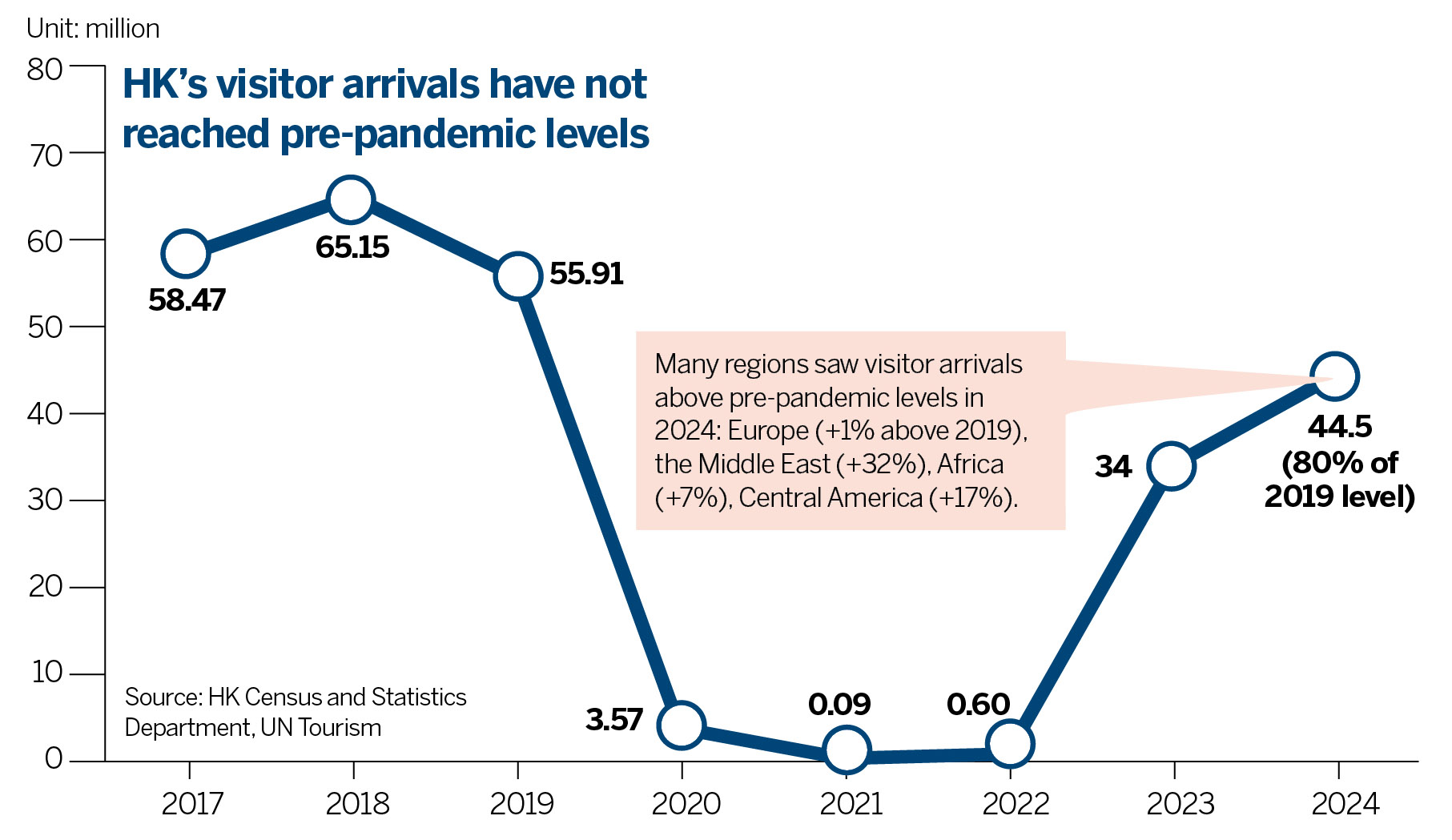
Overcome obstacles
Despite the Hong Kong Special Administrative Region government’s initiative, island tourism is still restricted by budget deficit, lack of exposure, and low stimulus to consumption.
Yiu proposed coordinating the resources of the city’s islands, beaches, coastline and marine areas to develop “blue tourism” and enhance their value as high-end resort destinations.
As developing uninhabited islands requires long-term planning and investment, Yiu suggests that the authorities focus on islands with good conditions or unique offerings, highlighting the potential of islands located in the tranquil Inner Port Shelter, and Chek Chau, where Hong Kong’s first dinosaur fossils were unearthed in October.
Yiu highlighted the need to better utilize the UNESCO Global Geopark. He noted that not very many Hong Kong residents have visited the site, calling for improvement of land transportation and amenities. Yip, on the other hand, recommended better utilization of the mature land resources on Lantau Island in his constituency, which is the largest island in the city, home to its international airport and Hong Kong Disneyland Resort.
He also advised strengthening ferry connections among major islands to promote island-hopping tours. Currently, most franchised ferry services cater to the commuting needs of island residents. Tourists who want to visit other islands have to return to Central pier first, which inhibits their willingness to explore.
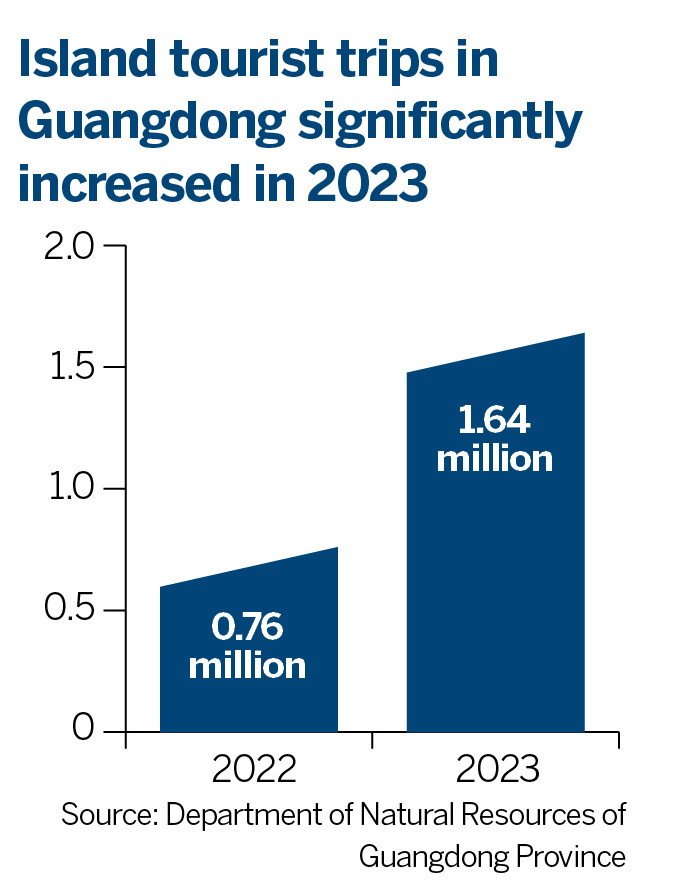
Additionally, experts urged the government to ease legal and regulation restrictions to drive innovation. Yiu calls for fewer limitations for private developers to build high-end resort hotels in Lantau Island and Sai Kung peninsula, attracting more tourists to stay overnight.
For some suspended leisure projects, authorities can encourage private organizations to reutilize the buildings and lands. They can also reach out to social groups interested in public project revitalization to engage in reactivating these resources, said Yiu.
Yip advocates reducing barriers for the development of guesthouses and camper vans on islands, to expand accommodation options for tourists. In the long run, Yiu hopes updates to maritime laws will accelerate the introduction of novel vehicles for sea travel.
Integrating island tourism with other tourism strategies like eco-tourism and the mega event economy is another option. Gao envisions developing islands rich in plant and animal resources into nature education bases, while Yip supports the introduction of more events throughout the year to enhance islands’ appeal.
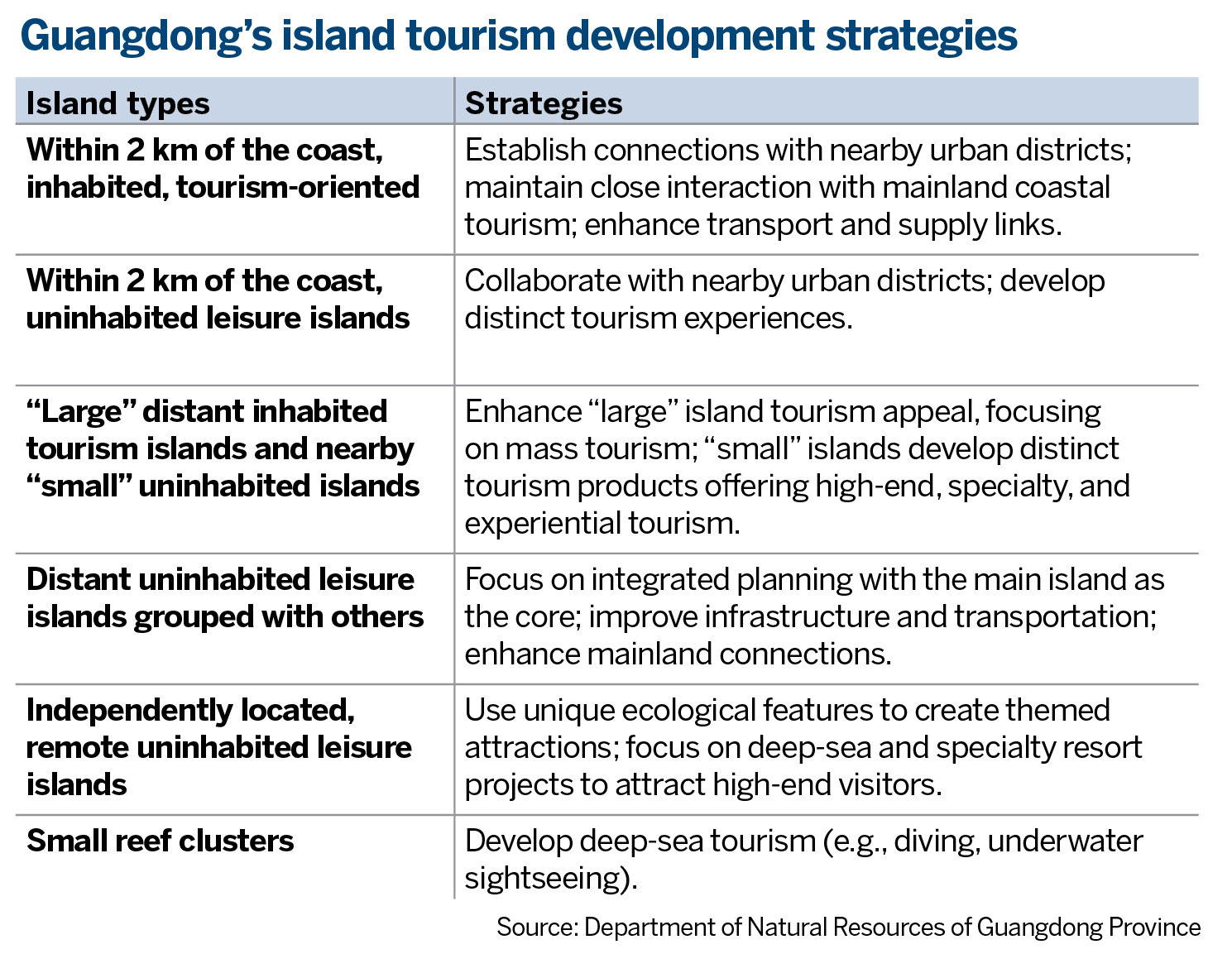
In terms of collaboration within the Guangdong-Hong Kong-Macao Greater Bay Area, experts highlight disparity in offerings as the key. They believe the feasibility of developing cross-border itineraries mainly lies in islands between Zhuhai and Hong Kong, as well as Shenzhen’s Dapeng peninsula and Hong Kong’s Sai Kung area.
Given the mobility of yachts and the purchasing power of their owners, both Yiu and Gao hope for regulatory breakthroughs to enable Hong Kong and Macao yachts to freely visit mainland Greater Bay Area cities.
ALSO READ: HK charts tourism revival with innovation, GBA synergy
The experts reckon that the popularity of Hong Kong islands has significant potential for enhancement among residents, as well as mainland and foreign tourists. Optimistic about the growth of the international market, Chen advises the city to increase exposure on major social media platforms and leverage the nation’s extension of visa-free transit for foreign nationals, to jointly launch island travel products with mainland cities.
Lin said she hopes the proposed development initiatives will not make the islands overly commercialized. She believes that making only slight enhancements to facilities can significantly improve travelers’ experience — like installing fencing at campsites to prevent incursion by wild boar.
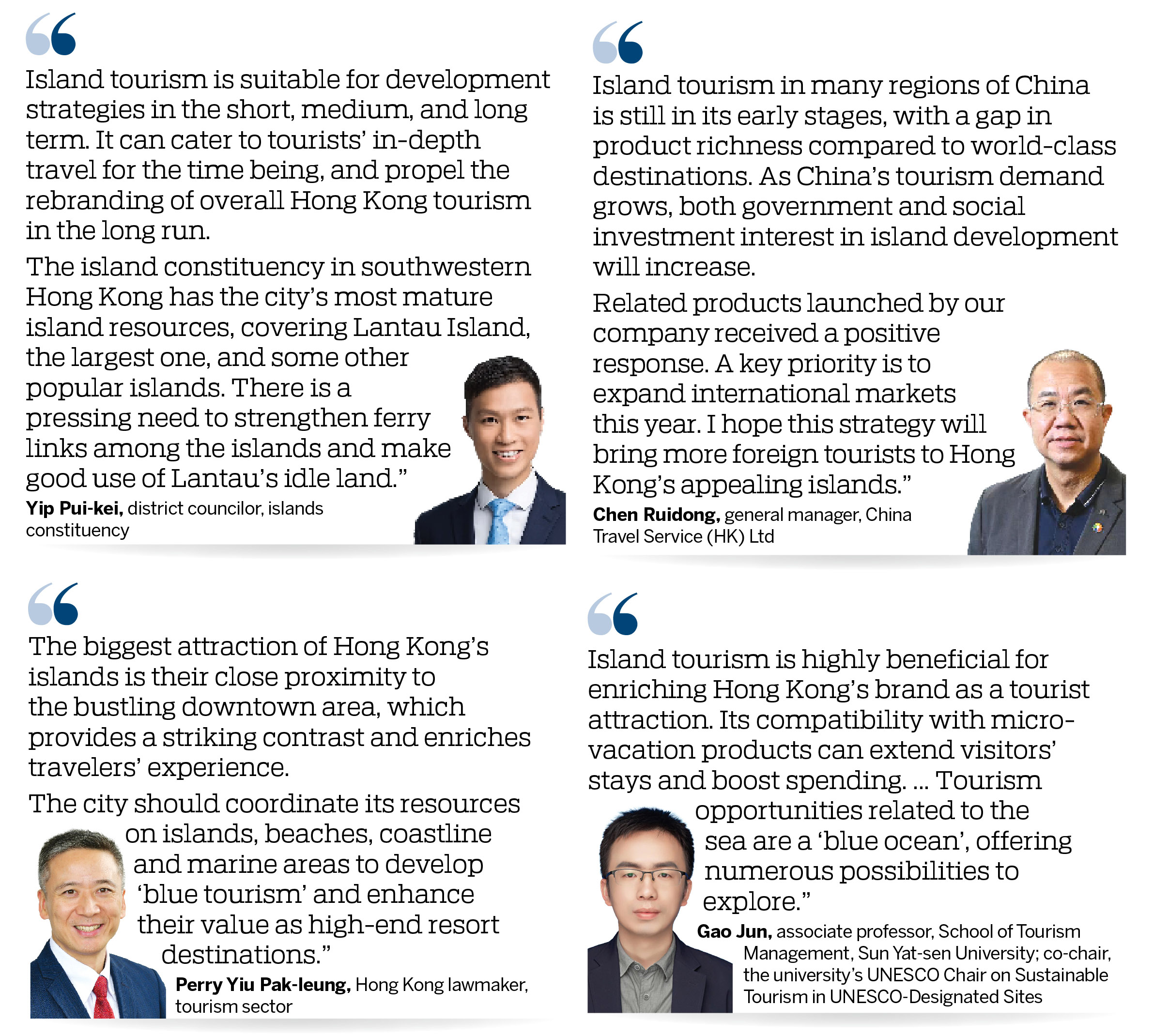
Next actions
1. Identify promising islands and formulate targeted strategies.
2. Strengthen inter-island ferry traffic among popular islands.
3. Ease restrictions on vacation hotels & guest houses.
4. Explore novel transportation for sightseeing tours.
5. Develop multidestination packages between HK and the mainland's islands.
Contact the writer at bingcun@chinadailyhk.com


